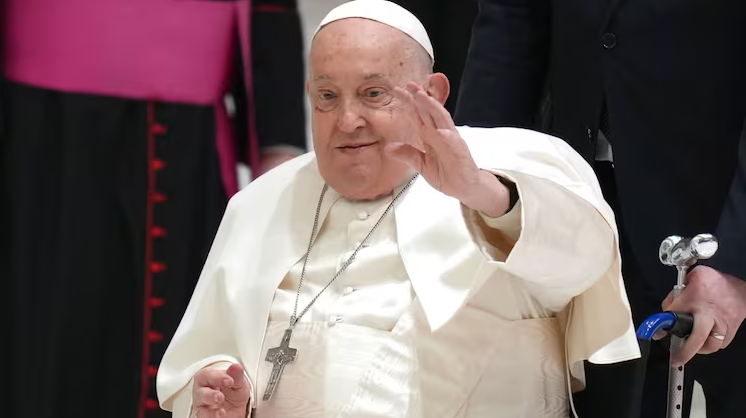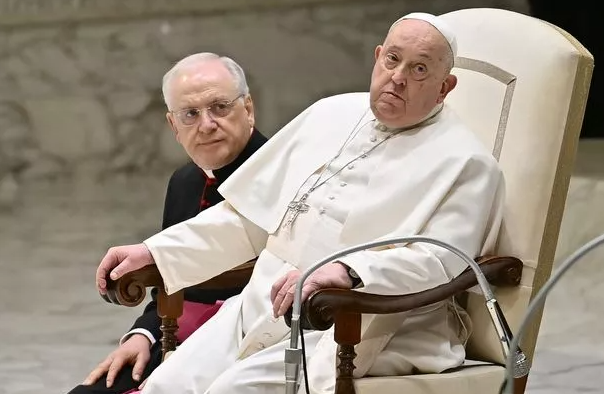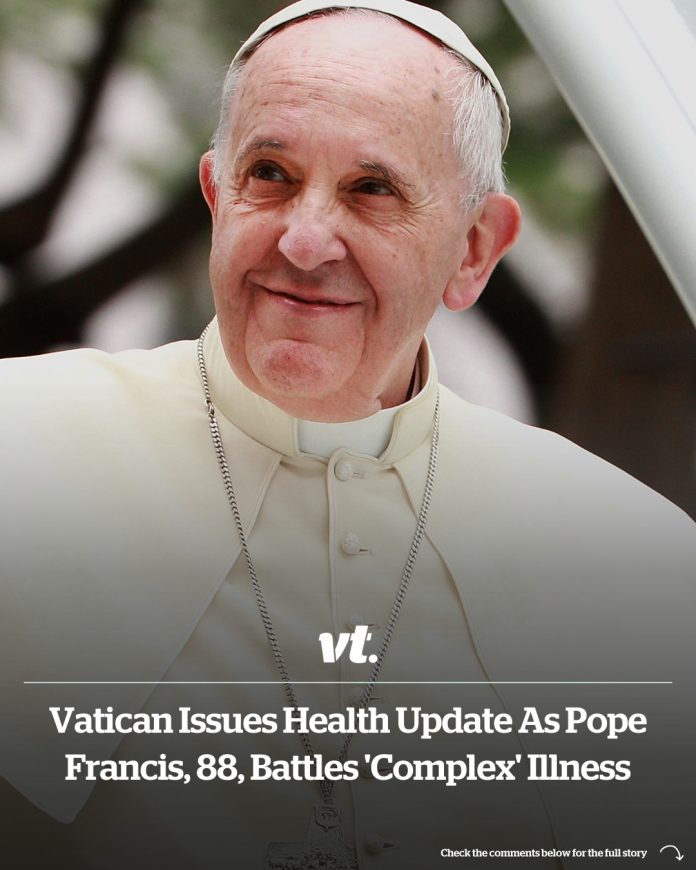Pope Francis, the 88-year-old leader of the Roman Catholic Church, has been hospitalized since Friday, February 14, 2025, at Rome’s Gemelli Hospital due to a severe respiratory infection. Initially admitted for bronchitis, subsequent medical evaluations have revealed a more complex condition, including a polymicrobial infection and bilateral pneumonia. This development has raised global concern, given the Pope’s advanced age and history of respiratory issues.
Medical Condition and Treatment
Upon admission, Pope Francis was diagnosed with bronchitis, which he had been battling for a week prior. Despite initial treatments, his condition did not improve as expected. Further diagnostic tests, including laboratory analyses and chest X-rays, indicated a polymicrobial infection affecting his respiratory tract. This type of infection involves multiple microorganisms, such as bacteria and viruses, complicating the treatment process. The Vatican’s official statement described his clinical condition as presenting “a complex picture” that necessitates an extended hospital stay.

In addition to the polymicrobial infection, a follow-up chest CT scan revealed the onset of bilateral pneumonia, an inflammation affecting both lungs. This diagnosis has led to a modification of his therapeutic regimen, now including corticosteroids and antibiotics to address both the pneumonia and underlying asthmatic bronchitis. Despite the severity of his condition, Vatican spokesperson Matteo Bruni reported that Pope Francis remains in good spirits, has been able to eat breakfast, and has engaged in light activities such as reading newspapers.
Impact on Papal Duties
The Pope’s hospitalization has inevitably affected his official responsibilities. The Vatican has announced the cancellation of his general audience scheduled for Wednesday, February 19, 2025, to allow for uninterrupted medical treatment and recovery. Additionally, all weekend engagements have been suspended, including significant events related to the Holy Year celebrations. These cancellations underscore the seriousness of his health condition and the necessity for rest and medical care.
Despite these disruptions, Pope Francis has endeavored to maintain some of his pastoral connections. Notably, he has continued his daily communication with the Holy Family Parish in Gaza, offering support and blessings to the parishioners. Father Gabriel Romanelli, the parish priest, shared that the Pope managed to make video calls even during a blackout in Gaza, demonstrating his unwavering commitment to his flock. This gesture has been a source of comfort and inspiration to many, reflecting his dedication to his pastoral duties even amidst personal health challenges.
Historical Health Challenges
Pope Francis’s current health issues are compounded by a history of medical challenges. As a young man, he underwent surgery to remove a portion of one lung due to a severe infection, which has made him more susceptible to respiratory ailments. In recent years, he has faced multiple health setbacks, including a significant colon surgery in 2021 and treatment for acute pneumonia in 2023. These incidents have raised concerns about his overall health and capacity to fulfill the demanding role of the papacy.
Moreover, the Pope has been dealing with chronic mobility issues, notably persistent knee pain that has often required him to use a wheelchair or cane. In December 2024, he sustained a bruise on his chin from a fall, and in January 2025, he injured his right forearm in another fall within the Vatican premises. These incidents highlight the physical vulnerabilities associated with his age and have led to discussions about the future leadership of the Catholic Church.
Global Response and Speculation
The international community has been closely monitoring Pope Francis’s health situation. Expressions of concern and prayers have poured in from around the world, reflecting the Pope’s significant influence and the affection held for him by many. Within the Vatican, there is a palpable sense of anxiety, as officials and the faithful grapple with the uncertainties surrounding his recovery.

In light of his current health crisis, there has been increased speculation regarding potential successors to the papacy. Several cardinals are considered frontrunners, each bringing a unique perspective and background to the role. Among them are:
- Cardinal Pietro Parolin (70, Italy): Currently serving as the Vatican Secretary of State, Parolin is viewed as a moderate who would likely continue Pope Francis’s legacy.
- Cardinal Fridolin Ambongo Besungu (65, Democratic Republic of Congo): Known for his conservative views, particularly on social issues, his election would represent a significant shift in the Church’s direction.
- Cardinal Luis Antonio Tagle (67, Philippines): With a more progressive stance, especially regarding the Church’s approach to marginalized communities, Tagle’s leadership could signal a move towards inclusivity.
The process of selecting a new pope involves a conclave of 138 eligible cardinals, who will convene to elect the next leader of the Catholic Church when the time arises.
Conclusion
Pope Francis’s hospitalization for a complex respiratory infection, including bilateral pneumonia, has prompted widespread concern and prayers from the global community. While he remains in good spirits and continues to engage in limited activities, his advanced age and medical history necessitate cautious optimism regarding his recovery. The situation has also sparked discussions about the future leadership of the Catholic Church, highlighting the profound impact of Pope Francis’s papacy and the challenges that lie ahead.

















